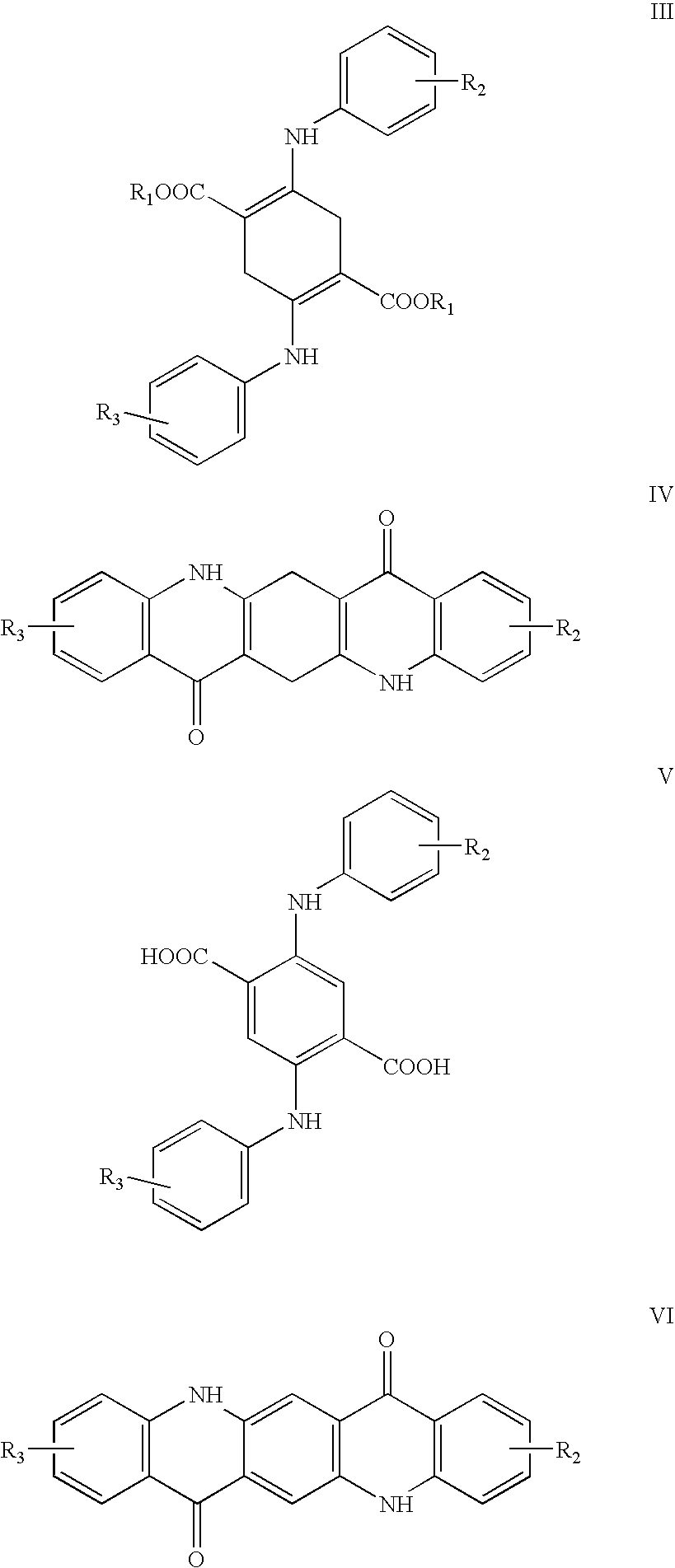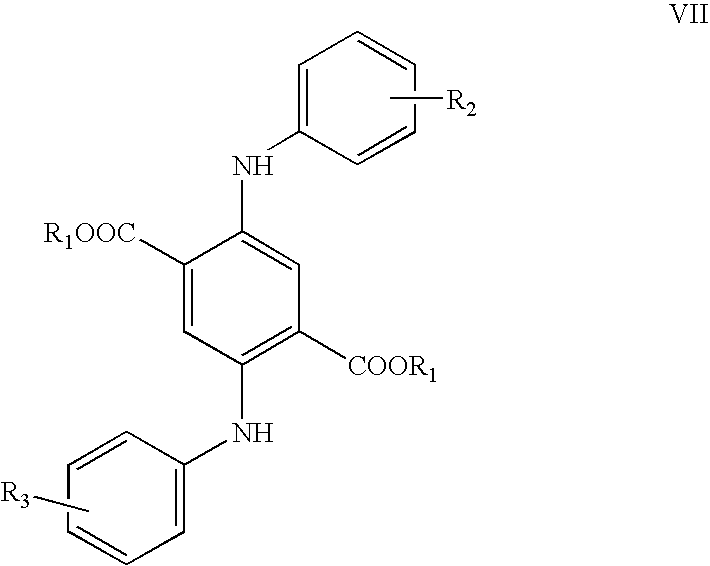Process for the preparation of organic materials
- Summary
- Abstract
- Description
- Claims
- Application Information
AI Technical Summary
Benefits of technology
Problems solved by technology
Method used
Image
Examples
example 1
[0043] 2280 g of dimethyl succinnoylsuccinate [formula II, in which R1=CH3; 4-cyclohexanedione-2,5-di(carboxylic acid methyl ester)], 1953 g of aniline, 2000 ml of isobutanol, and 40 g p-toluenesulfonic acid were placed at 20-25° C. in a 10000 ml “All In One Reactor”® of (Drais Mannheim Germany). Under stirring and nitrogen flow the mixture was heated to 100° C. within 60 minutes. From 80° C. onwards the reaction mixture became considerably thicker and was finally converted into a paste. The temperature was maintained at 99° to 100° C. for three hours, thereby allowing the mixture of isobutanol and water formed to distil off. The reaction mass became crumbly and finally largely disintegrated into an almost semi-powdery material. The reaction mixture was heated to 120° C. in 30 minutes and kept at 120° C. for 30 minutes under vacuum of 50 mbar. The mixture was cooled to 50° C. The material was emptied into a polyethylene sack, tightly fitted to the outlet of the reactor; affording 36...
example 3
[0045] Example 1 was repeated except that the aniline was replaced with 2226 g of p-toluidine, to give 4110 g (97.7% of the theoretical yield) of 2,5-di(p-toluidino)-3,6-dihydroterephthalic acid dimethyl ester of the formula XXIII. The purity thereof was 96.3%.
example 4
[0046] 1140 g of dimethyl succinnoylsuccinate (formula II, in which R1═CH3; 4-cyclohexanedione-2,5-di(carboxylic acid methyl ester), 976.5 g of aniline, 1000 parts of isobutanol, and 25 g of phosphoric acid of 85% concentration were placed at 20-25° C. in a 10000 ml “All In One Reactor”® of (Drais Mannheim Germany). Under stirring and nitrogen flow the mixture was heated to 100° C. within 60 minutes. From 80° C. onwards the reaction mixture became considerably thicker and was finally converted into a paste. The temperature was maintained at 99° to 100° C. for three hours, thereby allowing the mixture of isobutanol and water formed to distil off. The reaction mass became crumbly and finally largely disintegrated into an almost semi-powdery material. The reaction mixture was heated to 120° C. in 30 minutes and kept at 120° C. for 30 minutes under vacuum of 50 mbar. The mixture was cooled to 50° C.
[0047] For the cyclisation 4000 g polyphosphoric acid (117% phosphoric acid) were now in...
PUM
| Property | Measurement | Unit |
|---|---|---|
| Temperature | aaaaa | aaaaa |
| Temperature | aaaaa | aaaaa |
| Temperature | aaaaa | aaaaa |
Abstract
Description
Claims
Application Information
 Login to View More
Login to View More - R&D
- Intellectual Property
- Life Sciences
- Materials
- Tech Scout
- Unparalleled Data Quality
- Higher Quality Content
- 60% Fewer Hallucinations
Browse by: Latest US Patents, China's latest patents, Technical Efficacy Thesaurus, Application Domain, Technology Topic, Popular Technical Reports.
© 2025 PatSnap. All rights reserved.Legal|Privacy policy|Modern Slavery Act Transparency Statement|Sitemap|About US| Contact US: help@patsnap.com



